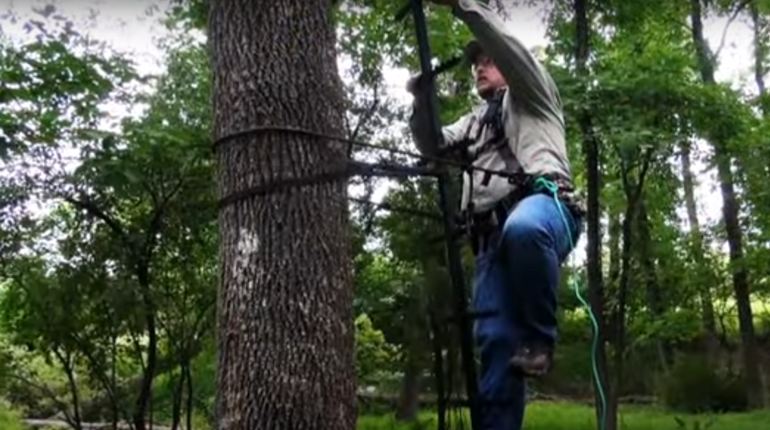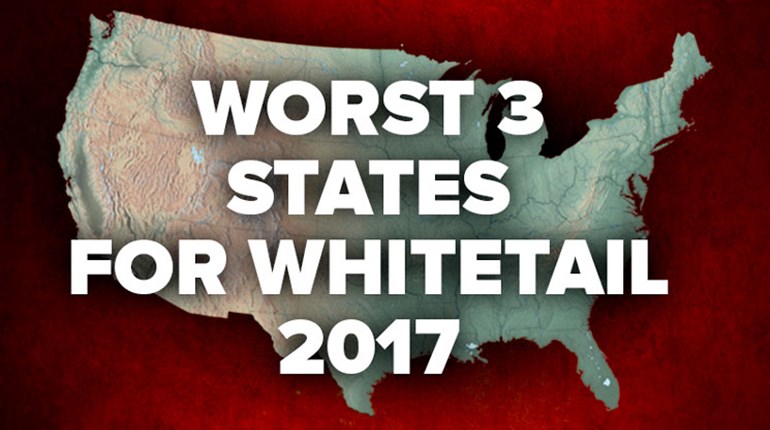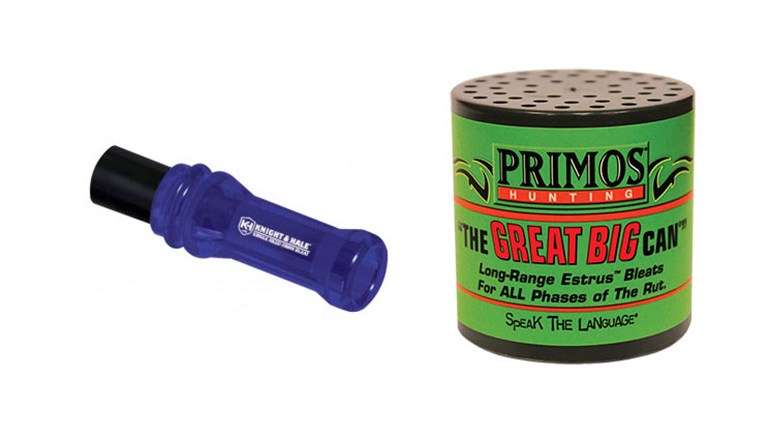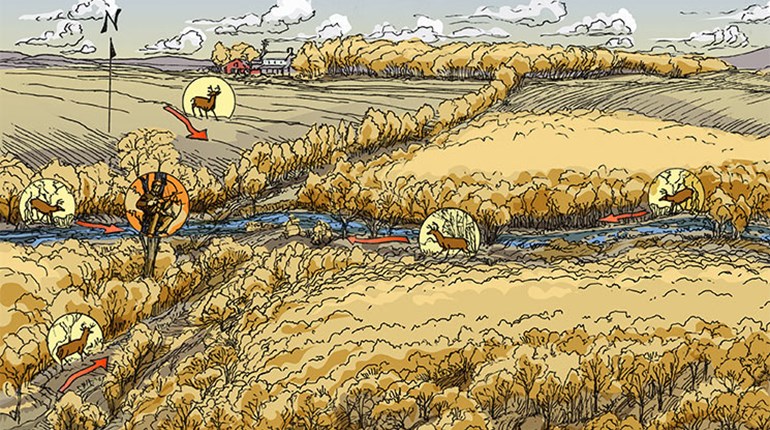
1. Pattern Bucks
Primarily, pre-season scouting means looking for resident bucks, velvet perhaps still fresh on their antlers, to pattern them and learn their habits. Some whitetail experts like Larry Weishuhn (wildlife biologist and author of Hunting Mature Bucks), say that though deer are habitual animals, those habits will change at the beginning of the rut. This is true enough: During the summer and prior to the rut, bucks of similar age will oftentimes group together in areas with less dense vegetation than they normally prefer while growing their antlers. When the rut begins, they will leave the summertime areas to find new territory away from other bucks and closer to the does. However, if you have observed a buck herd over the summer, you can use patterns of behavior you observed during early bow and gun seasons, before the bucks disperse for the rut, to bag a good buck. Most states offer a month or more of open season during this early-fall period.
2. Find Deer Paradise
There are a few things about deer that every hunter should know. To start, whitetails prefer to bed down and move in dense vegetation. It makes them feel protected from predators. Forests, especially dense evergreen forests, such as cedars or other conifers, are ideal places for deer to bed down, provided there’s a food source nearby. If you can find a natural funnel, a kind of thin strip of trees and brush connecting two larger bodies of forest, this is an ideal place for you to set up shop. During the rut, bucks of all sizes will be going back and forth through these thin connecting areas as they look for does.
Secondly, deer need to eat, and the sparse vegetation in a mature forest is rarely enough for them. What they prefer are food plots or crop fields, and they love the tender green forage growing throughout the summer. Soybeans are especially favored by deer, and they offer hunters an advantage, too. They never grow so high as to obscure your vision if you decide to use a binocular from a distance.
If you can put the two together, such as a dense brushy areas bordered by a field of crops of some sort, then you have a good chance of finding a large population of deer living there.
3. Scout for DeerDoes do not usually leave their territories at the beginning of the rut like bucks, so you may wish to scout out the area during the summer to see if you can find any deer. A trick my dad taught me is that if you believe you know where a bedding area is, where deer return during daylight hours to lie down and rest, simply walk into it and see if any deer run out. During the summer you don’t need to worry about spooking them, as you weren’t going to be able to shoot them anyway. There’s no need to worry about permanently scaring deer away from that bedding area either. Just because one person walked in on them once or twice won’t make them abandon a really secure sanctuary. They’ll be back.
Even if you aren’t seeing any deer but still suspect some might be around, you’re still in luck. Deer leave behind telltale signs of their presence that anyone can find if they look hard enough. One of these signs is the deer trail. Deer are like us in that they are creatures of habit and will usually use the same route to get from one place to another as they did any other time they needed to get from that specific Point A to that specific Point B. Many times these routes were taught to the fawns by their mother. Because of this, deer know and use these routes, and use them so much that they will stamp down the vegetation to leave a physical trail. The obvious advantage of this is that it makes deer move predictably, even during the rut, in densely vegetated areas. With this knowledge, hunters can position themselves right along the deer trails to ambush the deer as they walk by. Intersections of two or more trails are hotbeds of activity, and if you can find one you should definitely exploit it.
4. Look for RubsRubs are also a good sign of buck activity. Rubs are where bucks have rubbed their antlers on trees, particularly on cedars and pines, creating a bald spot on the tree where the bark should be. Bucks make rubs for two reasons: One, to remove velvet from their antlers when it is no longer needed; and two, to mark their territory. If you see a line of rubs, this is most likely a buck marking his territory, a very good indicator that you should hunt this area come fall. Do keep in mind that the rubs you will be seeing in the summer will be nearly a year old.
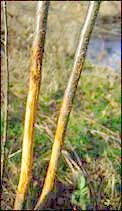
5. Select a Stand or Blind Location
A small break in the forest line is another key because it can expose the deer as they pass through on their way between bedding and feeding sites. However your stand will also be exposed in a break, so you may want to consider not setting up right in the break, but rather somewhere you can be concealed. At my friends’ hunting camp in Alabama, the setup was an elevated deer blind on the top of a hill overlooking a break in the trees. That gave us the advantage of not spooking the deer, though it did mean I would have to take a long shot. And that’s just what happened. I got a nice buck just as it was crossing through the break. These strategies definitely work.
Depending on how the densely vegetated the areas around the trails are, and if you can find a natural funnel, you may want to use a tree stand or elevated blind rather than sitting on the ground. Not only will this give you a better view of everything around you, but it will also help to keep the deer from picking up on your presence. If you are thinking about setting up a new tree stand, this is the time to decide where. If you scout out where you want to put it now and put it up soon, not only will it save you the time and trouble later when you could have been using it, it will give the deer time to get used to it and see it as a normal part of the landscape. If you want a better shot at bagging the buck of your dreams this coming season, the time to start preparing is now, by scouting out the area you would like to hunt in.
6. Safety-Check Your Stand
If you plan to hunt an existing tree stand, summertime is the perfect time to perform a safety check on the stand.
- Check all strapping material, buckles, seats and stitching for wear and tear.
- Oil hinges; tighten bolts and screws.
- Repaint where necessary.
- Check all rope assemblies for cuts, unraveling or any weak areas.
- Wash away dirt, mud or oils that may create dangerous slippery areas.
- Add padding to rails where needed.
- Take steps to reduce any potential noisy squeaks or clicks.
- Order and replace any missing or damaged parts.
- Purchase safety accessory items that you do not have.













